Text


les animaux de l'histoire
777 notes
·
View notes
Text
Hey tumblr, I need your input for a moment.
So in two weeks on Tuesday I have a very important work meeting at 9:30 am that I've been dreading for weeks.
I've concert tickets for a band I only vaguely care about (but i LOVE concerts in general) for the day before in a city about 2-3 hours away.
So basically my question is
Details/more info below in case anyone cares
I work in research at a university. In the meeting we present the work of the last couple months to industry people/people that give us money.
I/our department is not the only one working on the project. If I actually have to talk during the presentation, it will only be a minor part (not sure if I have to speak yet; also I‘m the only women in a group of around 15-20 people so it‘s not like anyone will listen to me anyways. Speaking from experience on that part)
The meeting is online. So if everything fails I could probably just set up my laptop somewhere with a wlan connection and attend the meeting from there. Would rather not though.
The day of the concert I also have another appointment in the afternoon (supervising students), but I think I could reschedule that one
I already bought the ticket (35€) and booked a hotel room (55€). It‘s not that much of a problem if I don‘t get my money back - that‘s what I get for buying stupid shit.
The band is PVRIS, I don‘t really listen to them much, but I saw them open for Fall Out Boy and that was fun
I would have to drive back at around 5:20 am to be at uni at 8 am, because I‘m traveling by train (can‘t drive) and the german train system is notoriously unreliable. So I want to have some buffer
I‘ve done shit like this before although back then I was just a student with much less responsibility and the health/body of a 22 y/o who doesn‘t give a fuck about only sleeping 4 hours
Most importantly, as unhinged as it seems, going to the concert is my piss poor attempt at self care. The last time we had a meeting like that I handled it terribly: The meeting went well, but it completely exhausted me and fucked up my ability to function like a human for almost a week. I‘m not good at situations that involve socializing/presenting myself to people (thanks autism). So after the meeting I isolated myself, basically didn’t work for the rest of the week, struggled to even speak (got extreme stutter/just could not talk), and just overall felt extremely “off“. I drank excessively trying to numb my brain, self harmed (burned myself), and only somewhat got myself together again after a week when a friend told me i looked like shit and gave me some weed. So yeah… Concerts are one of my favorite things ever (number 4 on the list of reasons why I won‘t off myself) and one of the only reasons I ever feel normal/not stressed.
3 notes
·
View notes
Text
National Fossil: Madagascar
Madagascar is Africa‘s biggest island, and as most of you will know: Islands are strange places with strange animals. This was just as true in the past so there are quite a few interesting contenders for you to chose from.
As always, it could be a fossil that is just exceptionally well preserved and beautiful, had a huge impact on paleontology and our knowledge of the past, is very common/representative of the area, is beloved and famous in the public eye, is just a very unique and interesting find or has any other justification.

Coelurosauravus: First of, we have a small gliding reptile that lived during the Permian, about 250 million years ago. It probably could glide between trees using wings that were spanned open by “bony rods“, which were unrelated to other parts of the skeleton. This is pretty unique, because most other gliding or flying animals repurpose already existing bones into wings (Art by Charlène Letenneur)
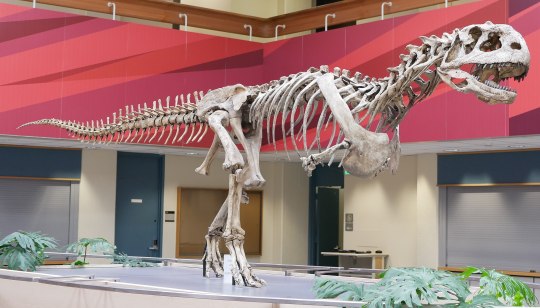

Majungasaurus: There are quite a few dinosaurs known from Madagascar, especially from the late Cretaceous. The most famous one of them is probably the up to 8 m long theropod (group of meat-eating dinosaurs) Majungasaurus. Their remains have first been found in the late 19th century (although wrongly assigned at the time), and since then many more fossils have been found, making Majungasaurus one of the better studied theropods in the southern hemisphere (Art by Gabriel Ugueto)
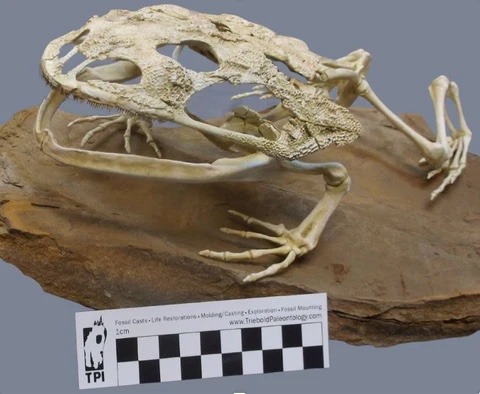

Beelzebufo: Speaking of late Cretaceous - look, it‘s everyone‘s favorite frog, the Devil‘s Toad! Not only has it an objectively awesome name, it is also the biggest known frog of all time. If any frog stands a chance to win one of these votes, I think it‘s this one (Art from Prehistoric Planet)
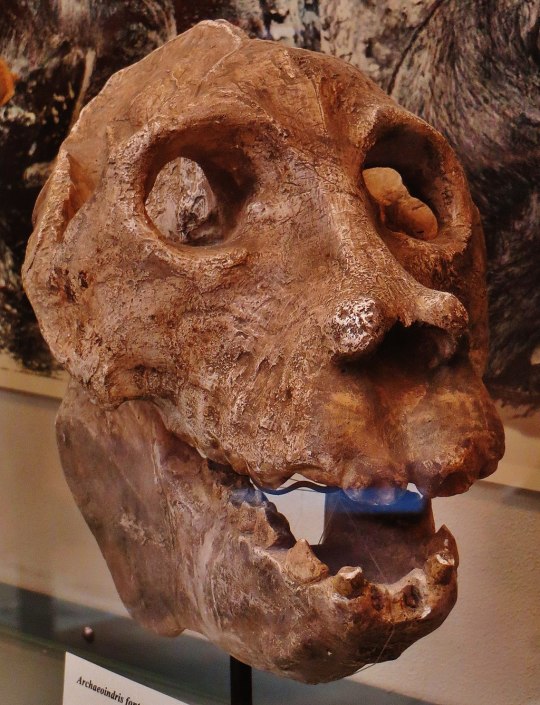

Archaeoindris: We‘re making a big time jump all the way to the almost-present for the next contestant. Archaeoindris only became extinct around 350 BCE, making it‘s fossil status maybe a bit questionable. However, no group of animals feels more representative of Madagascar than the lemurs, and Archaeoindris was the biggest of all of them - about the size of a male gorilla. Btw, there were many big and strange lemurs that lived in Madagascar until very recently, when another group of primates showed up on the island and changed that (Art by Nix Illustrations).
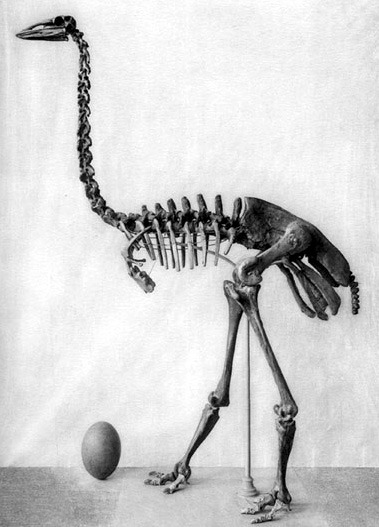
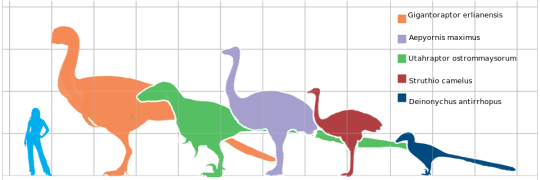
Aepyornis: Even more recent (up until about 1000 AD), but no less extinct because of us are the elephant birds. Birds becoming flightless and gigantic is a very common thing to happen on islands and this might be the most extreme example of it, with the biggest elephant birds being about 3 m tall and somewhere between 300 and 1000 kg heavy (Illustration by Matt Martyniuk)
2 notes
·
View notes
Text
Every now and then I think I'm unique because what are the chances I'd run into another autistic person obsessed with paleontology that also happens to be obsessed with Taylor Swift.
But there are dozens of us! DOZENS!
Dinosaur autism spectrum swifties todays our day!

🦖🦴🦕
171 notes
·
View notes
Text


this snake that caught a lizard that caught a bug
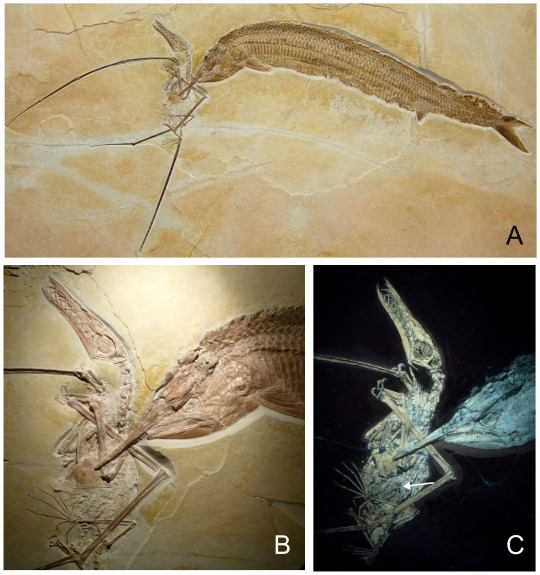
this fish that caught a pterosaur that caught a fish

this cat that caught a lizard that caught a lizard
50 notes
·
View notes
Text


The natural history museum in Berlin has this giant climat controlled glass cube in which they store their "Nasssammlung": thousands of mostly fish and reptiles preserved in alcohol. Im not sure if it is the entire collection or just a part of it, but it is massive. And the coolest thing is, that it is accessible to the public. Obviously you can't go inside the cube, but the room around it is just another part of the museum.
When I first saw it during a school field trip I was mesmerised. All the other kids considered the dead snakes and stuff somewhere between boring and disgusting - but I stared at it like it was the Mona Lisa
and when i say "specimens" i don't mean taxidermied mounts made to look lifelike for exhibit, i'm talking about the thousands to millions of specimens lying in drawers and shelves like this:
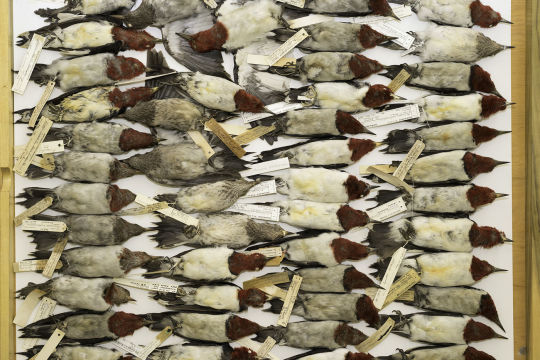

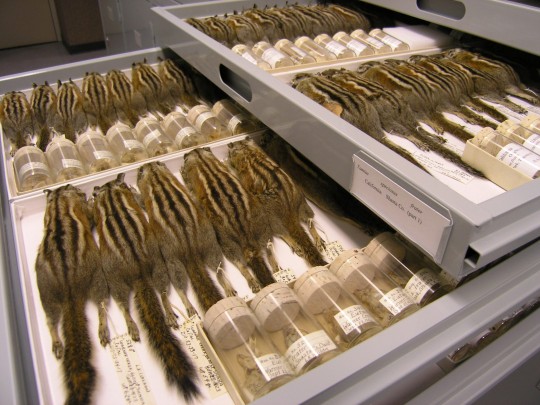

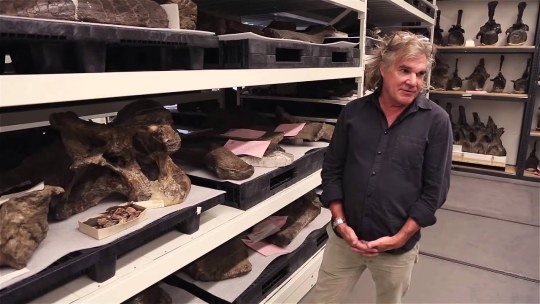
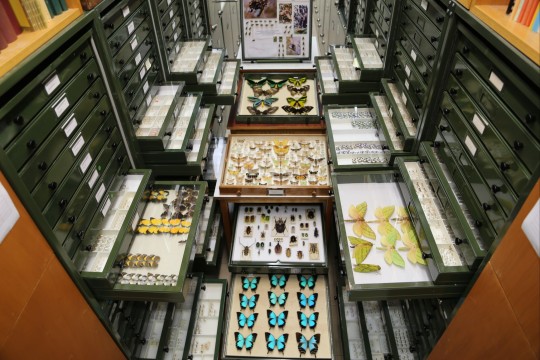
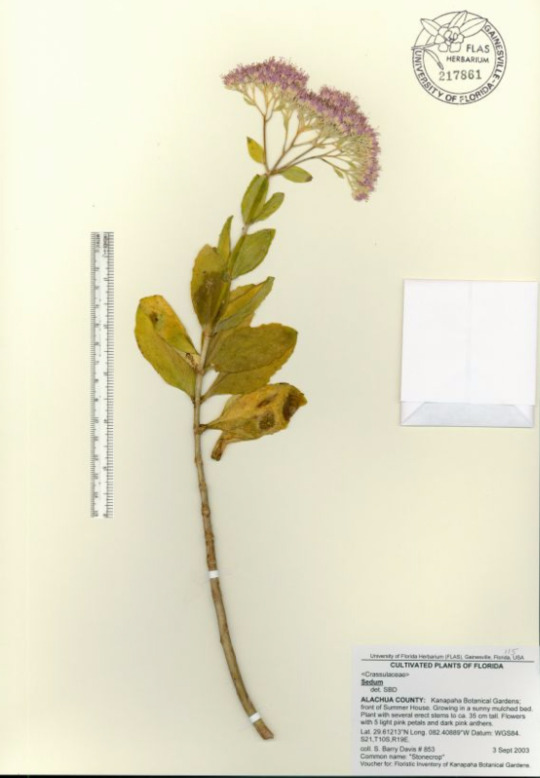


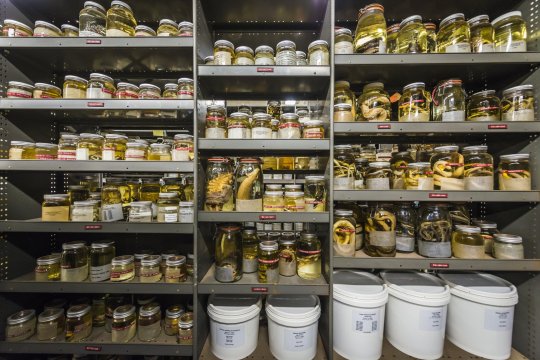
asking because i didn't know this until i was in high school. reblogs greatly appreciated, i want to reach as far out of science nerd tumblr as possible!
3K notes
·
View notes
Text
A coworkers just gave me an older book about the Burgess shale. It also talks about evolution including some of those ape-to-human drawings and those 80s cartoonist really had no chill



(Last one's my favourite)
#evolution#paleoblr#memes#the book is wonderful life by stephen jay gould btw#havent read it yet so no idea if i should recommened it
1 note
·
View note
Text
Very Unscientific Flow-Chart to answer the question whether an animal is a dinosaur.

It‘s probably wrong somewhere bc its 2 am and i should be sleeping - but yes, this also urks me sooo much
one thing that majorly urks me is when people assume that mosasaurs/pterosaurs/plesiosaurs/ichthyosaurs are all dinosaurs like. No!!! None of those guys are dinosaurs actually!!! They're part of their own clades/groups!!!
i mean like. yeah. they are all under the clade sauropsida but one of the Main Things That Classifies A Dinosaur As A Dinosaur is the hind limbs being held erect behind the body. those other guys dont have the erect hind limb posture of true dinosaurs.
Another thing that urks me is assuming that mosasaurs, plesiosaurs, and ichthyosaurs are Synonyms. They are not,,,,,,,,,,,,
2 notes
·
View notes
Text
National Fossil: South Africa
Welcome back to my silly little paleontology poll about which fossils should represent each country. This time we're focusing on the African continent and right now on South Africa.
You know the drill: As always, it could be a fossil that is just exceptionally well preserved and beautiful, had a huge impact on paleontology and our knowledge of the past, is very common/representative of the area, is beloved and famous in the public eye, is just a very unique and interesting find, or has any other justification.
So here are our contestants:

Australopithecus africanus (Taung Child): As we‘re moving into Africa it should come to the surprise of absolutely nobody that the continent is covered in fossils telling us about our own human evolutionary history. The Taung Child, the skull of a young Australopithecus, was discovered in 1924, and as the first early hominin ever found, it sparked lots of controversy in the scientific community, as this was long before we had a good understand of the “ape-to-human“-transition: It took decades for Australopithecus to become fully accepted as an “early human“, but since then it has become one of the most important paleontological finds ever.
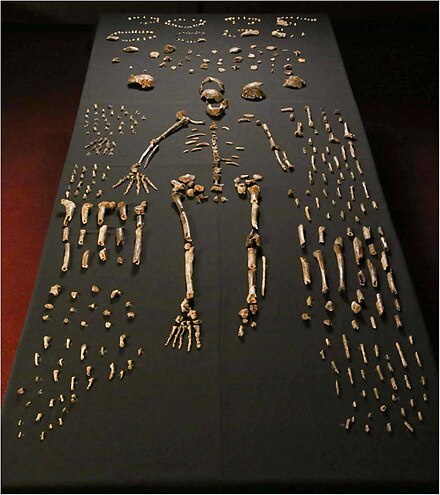
Homo naledi: A much more recent find is Homo naledi, discovered 2013 in a cave system. Even though the bones of at least 15 individuals have been found, these cousins of ours are still quite mysterious, as they show some archaic characteristics that seem out of place for how young the fossils are and more research needs to be done.


Lystrosaurus (Art by John Sibbick): Oh look, it‘s everyone‘s favorite mass extinction survivor! The small to medium-sized dicynodont (an early cousin of what would become the mammal line) made it through the Permian mass extinction, aka The Great Dying, seemingly unharmed - on the contrary: In the early Triassic they were so numerous that in some South African fossil sites more than 90% of all found material are Lystrosaurus!

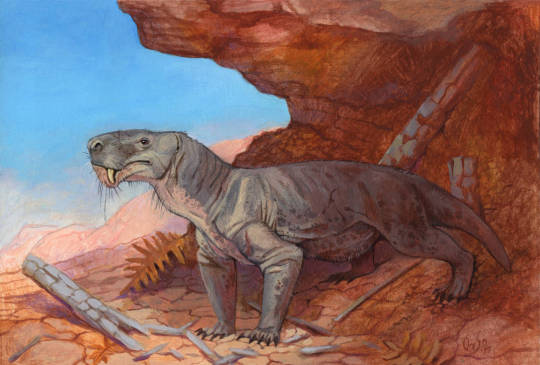
Inostrancevia (Art by OrsoMoretti): Someone who didn‘t made it through The Great Dying was Inostrancevia, but that doesn‘t make the 3 m long gorgonopsid (another “not-quite-a-mammal-yet“) any less impressive. Its most striking identifier were the 15 cm long sabertooth-canines. In that sense, gorgonopsids like Inostrancevia did their impression of sabertooth-cats over 200 million years before cats even became a thing.
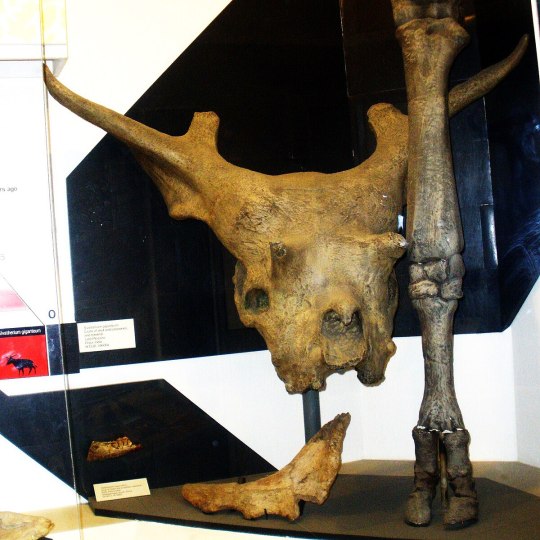

Sivatherium (Art by Jaime Chirinos): If you’d rather choose something that feels a bit more like a typical african animal, maybe just as a slightly more ancient version - South Africa of course doesn‘t disappoint here either: Sivatherium, a short-necked giraffe might hold a good balance between something that is recognizable enough to our modern eyes, yet strange and unusual enough to be a unique and interesting pick.
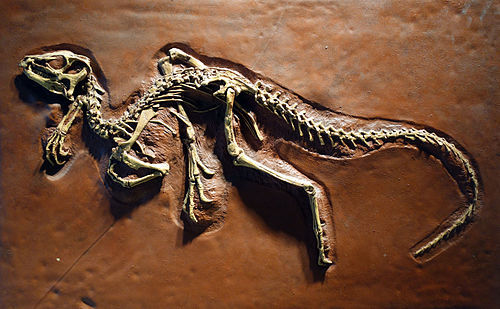

Heterodontosaurus (Art by Gregory S. Paul): Lastly, if you want to pick a dinosaur, South Africa provides you with some good finds on early dinosaurs: Heterodontosaurus lived during the early Jurassic and was a very basal member of the ornithischians, the same group that would later include such famous figures as Triceratops, Stegosaurus or Parasaurolophus. Apart from generally giving scientist a hard time placing it on the familiy tree, the small dinosaur is mostly known for its strangely shaped teeth, from which it got its name.
#paleontology#fossils#paleoblr#south africa#australopithecus#lystrosaurus#synapsid#inostrancevia#sivatherium#heterodontosaurus
2 notes
·
View notes
Text
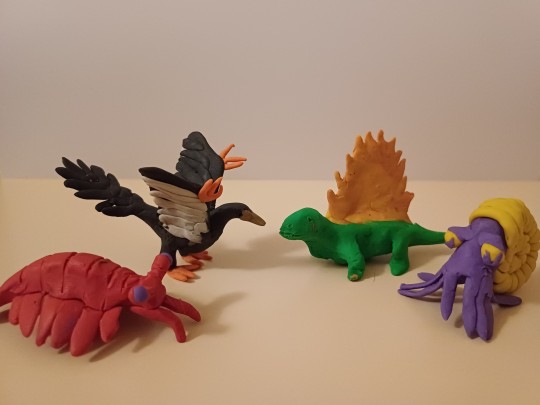

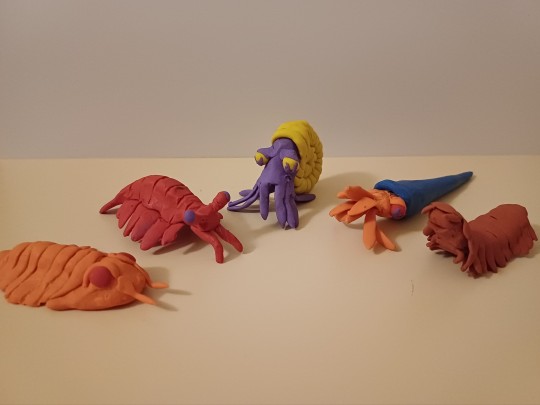

Loved this modelling clay as a child, but somehow convinced myself that I'm too old for it. Turns out I was wrong. Still love it.
This is your sign to buy the stupid childish 10 dollar item that your parents never wanted to get for you.
1 note
·
View note
Text

Oh look who finally finished the National Fossils map for South America.
By popular vote Argentinosaurus, Prionosuchus and Perucetus have been selected for their countries. And since you guys decided on giant dinosaur, giant amphibian and giant whale respectively, I thought I‘d stick with the theme. So I picked a giant croc, giant snake, giant bird, and giant rodent.
Then there is Macrauchenia, because I wanted to include some of South America‘s native ungulates, a group of mammals that was endemic to the continent and is now completely extinct. Also they just look like big llamas to me which feels very South American. I was considering some sloths or glyptodons but I already included some of those for Central America and I didn‘t want to repeat them.
Smilodon because it seems too iconic of a creature to not be featured anywhere.
And last but not least: Lovely, stupid-looking, early jawless fish Sacabambaspis.
4 notes
·
View notes
Text
Id like to inform everyone that i saw my very first snow drop of the year yesterday. This means that once again I accomplished the seemingly impossible task of surviving winter.
Yay me.
0 notes
Text
Life in the Middle Triassic
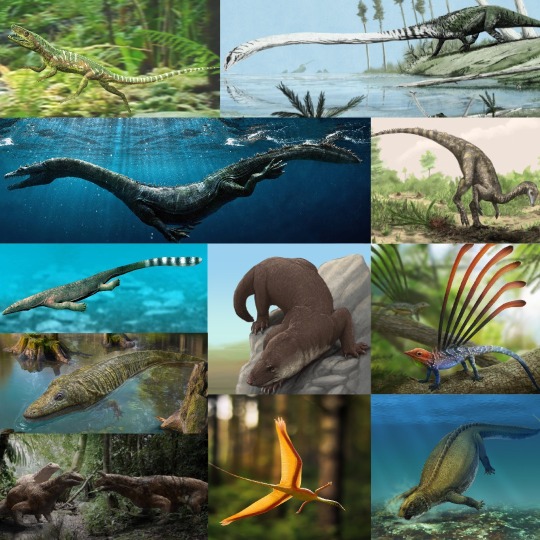
(first row: Euparkeria, Tanystropheus; second row: Nothosaurus, Nyasasaurus; third row: Thalattosaurus (top), Mastodonsaurus (bottom), Cynognathus, Longisquama; fourth row: Shringasaurus, Sharovipteryx, Placodus)
Art by:
Tanystropheus, Nyasasaurus - Mark Witton
Thalattosaurus - Nobu Tamura
Nothosaurus - Johnson Mortimer
Mastodonsaurus - Vladislav Egorov
Sharovipteryx, Longisquama - Julio Lacerda
Shringasaurus - Ntvtiko
Cynognathus - Gabriel Ugueto
Euparkeria - Taenadoman
Placodus - Sergey Krasovsky
The Triassic is a fantastic time if you’re interested in weird creatures and it’s a shame that it often gets overlooked in favor of the more dinosaur-rich Jurassic and Cretaceous. The main reason for the abundance of Triassic weirdos is that the time period was bookended on both sides by mass extinctions: The end Permian mass extinction had just left the planet empty, with lots of opportunities for evolution to go crazy as the the few survivors refilled niches. At the end of the Triassic however (Spoiler alert), another mass extinction wiped out most of the newly established forms, which is why they look so foreign and strange to us - bizarre anomalies that only existed for a brief period of time and didn‘t leave any successors to help us understand them better.
One of those weirdos is leg-winged Sharovipteryx. Because yes, while every other vertebrate on the planet decided that arms are pretty good for flying, Sharovipteryx wanted to not be like other girls and used its legs instead. While it wasn‘t capable of powered flight (only birds, bats and pterosaurs ever accomplished that), it was probably a decent glider (Dyke, 2006).
From the same fossil beds as Sharovipteryx comes another unusual critter: Longisquama. At first glance it might look like your typical little lizard - if it wasn‘t for its back being covered with those long …scales? Feathers? Maybe just plant leaves that somehow fossilzed next to the animal? We really are not sure what exactly is going on with the back of this little guy. Although it seems like the most recent idea is, that those appendages are not feathers in the sense that birds have them, but that both feathers and Longisquama‘s structures might be homologous, meaning that they come from the same origin (Buchwitz, 2012). As for what were they doing with the structures? Probably sexual display, which is the paleontology version of saying “we‘re not sure, but unless you‘ve got a better idea, we‘re sticking with this one“.
(Oh, and btw both Longisquama and Sharovipteryx are prime topics for David Peters, self-proclaimed paleontologist that apparently loves to spread misinformation and seems to have beef with the entire paleo-community - so be cautious when you see something written by him. Man, I really don‘t wanna be involved with paleo drama. I wasn‘t even aware there was paleo drama)
The placement of both Sharovipteryx as well as Longuisquama on the family tree is pretty uncertain, but most likely they fall somewhere around the base of the Archosaur lineage, a group that you will hear a lot about in the future, as it includes the flying pterosaurs, everything related to crocodiles, and of course the dinosaurs. The earliest of those you might see around this time in the form of medium-sized average-looking bipeds like Nyasasaurus.
Also settled around the base of the archosaur line is long necked Tanystropheus (although some of its fossils were believed to be flying pterosaurs for a long time because its neck vertebrae were mistaken for wing finger bones). With a length of around 5 m it was pretty big for the time. It most likely lived a semi-aquatic lifestyle, staying on the shores while it used it oversized neck to catch fish from the water.
During the Triassic we see quite a few reptile groups going for more aquatic lifestyle. While some, like the Thalattosaurs were relatively short-lived, others dominated for most of the age of reptiles. One of the most prominent groups are the Sauropterygia. The name (which translates to “lizard flippers“) might not sound too familiar, but this is the group that will later contain the Loch-Ness-monster looking plesiosaurs and their shorter-necked cousins, the pliosaurs. In the early days of this group the animals weren‘t quite as well adapted for the waters yet, but you can already see were the journey is going. Nothosaurus for examples, lived probably similar to seals, while Placodus was more terrestrial and only spent time in the water to forage for food.
Most of this was all very reptile-focused. That is because by now the synapsids, those early cousins of our own lineage, that roamed the world as giant beasts during the permian, had lost their positions at the top of the food chain. For the most part, they were now constrained to small burrows and dark nights, to the shadows of much larger creatures. Their story does of course not end here, but for the next 170 million years our planet truely was a planet of reptiles.
1 note
·
View note
Text
Usually spotify tells me that I have “this is me trying by Taylor Swift“-depression or “I‘m not okay by MCR“-mental illness, but this year I got Free by Florence and the Machine as my top song. I will consider that progress.
#spotify wrapped#taylor swift#my chemical romance#florence and the machine#one time i showed my therapist that this is me trying and im not okay were both in my top 5#she didnt even understand the problem#like girl that was a cry for help#also sorry if youre just following me for the dinosaurs
11 notes
·
View notes
Text

Last little set of ancient animal doodles for the time being, and it's a few of my favorite non-dinosaur Triassic reptiles for a sticker sheet! From the top, Tanystropheus, Sharovipteryx, Longisquama, and Erythrosuchus.
[ID: A series of cartoony drawings of prehistoric reptiles against a leafy green background. The first at the top has an extremely long neck, longer than the length of the rest of its body, and is light gray with darker gray stripes. It is smiling. Below that is a small, pale green, lizard-like animal with yellow leg marks, shown from above. It has a large skin flap between its legs with eyespots, allowing it to glide. Next is a bright blue animal with paler blue spots and belly and very long appendages sticking up all along its back. The spines are red and yellow with blue eyespots at the top. It looks prideful. Finally, there is a bulky red animal with a very large, dinosaur-like head, smiling with a furrowed brow. End ID.]
#longisquama#tanystropheus#erythrosuchus#triassic#paleobr#shavoripteryx#fucking love weird triassic creatures#i mean just look at them#they are perfect
50 notes
·
View notes
Text

A little result from tonights #paleostream. We looked into the diversity of aetosaurs, Triassic tanks that are actually related to crocodiles.
844 notes
·
View notes
